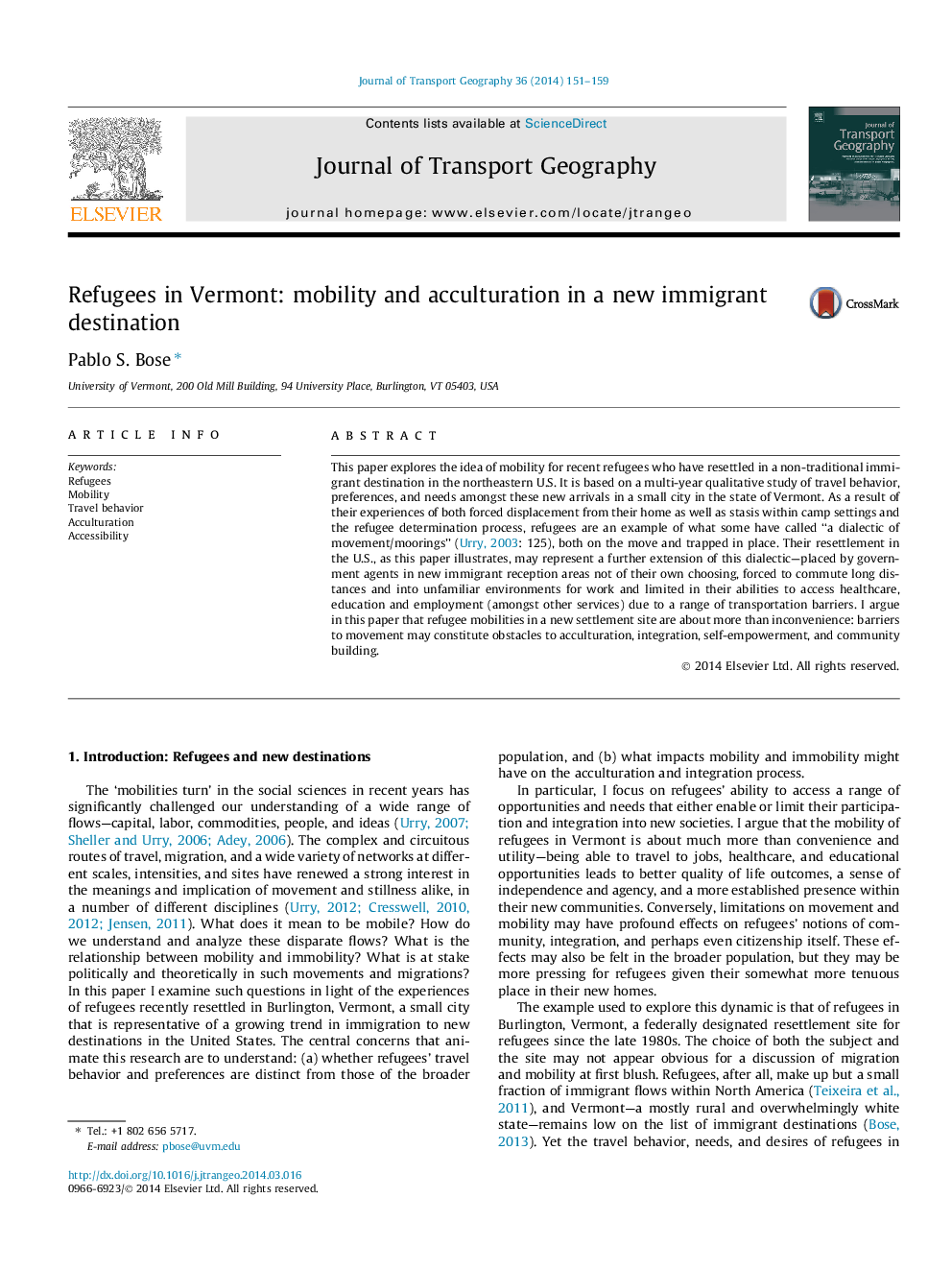| کد مقاله | کد نشریه | سال انتشار | مقاله انگلیسی | نسخه تمام متن |
|---|---|---|---|---|
| 1059344 | 1485431 | 2014 | 9 صفحه PDF | دانلود رایگان |
• Mobility is a key element to consider in the process of refugee acculturation.
• Better access to important destinations can improve resettlement outcomes.
• Refugees in Burlington, VT find their current mobility and access to be limited.
• This has resulted in a number of ad-hoc solutions for addressing the situation.
• Policymakers should explore more sustainable strategies to address refugee mobility.
This paper explores the idea of mobility for recent refugees who have resettled in a non-traditional immigrant destination in the northeastern U.S. It is based on a multi-year qualitative study of travel behavior, preferences, and needs amongst these new arrivals in a small city in the state of Vermont. As a result of their experiences of both forced displacement from their home as well as stasis within camp settings and the refugee determination process, refugees are an example of what some have called “a dialectic of movement/moorings” (Urry, 2003: 125), both on the move and trapped in place. Their resettlement in the U.S., as this paper illustrates, may represent a further extension of this dialectic—placed by government agents in new immigrant reception areas not of their own choosing, forced to commute long distances and into unfamiliar environments for work and limited in their abilities to access healthcare, education and employment (amongst other services) due to a range of transportation barriers. I argue in this paper that refugee mobilities in a new settlement site are about more than inconvenience: barriers to movement may constitute obstacles to acculturation, integration, self-empowerment, and community building.
Journal: Journal of Transport Geography - Volume 36, April 2014, Pages 151–159
